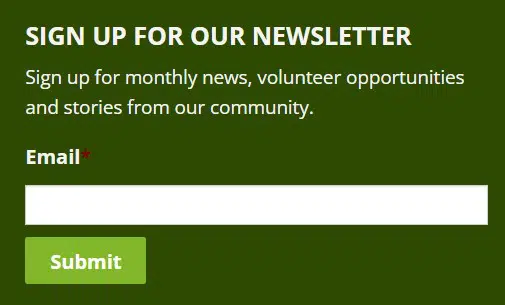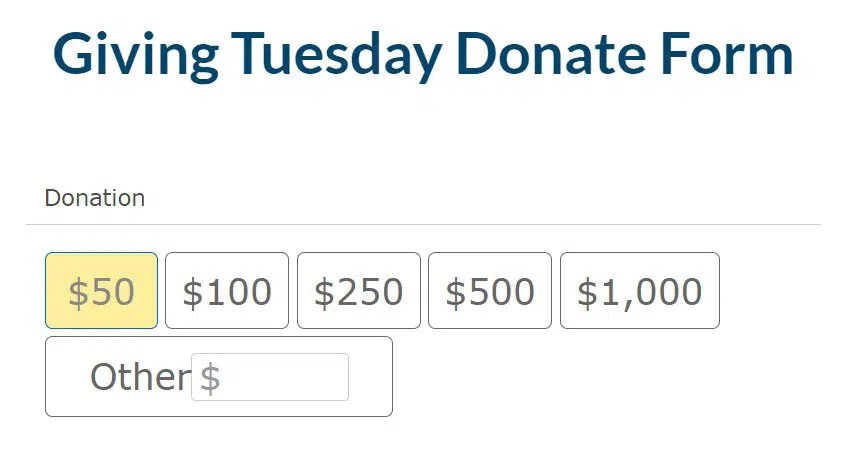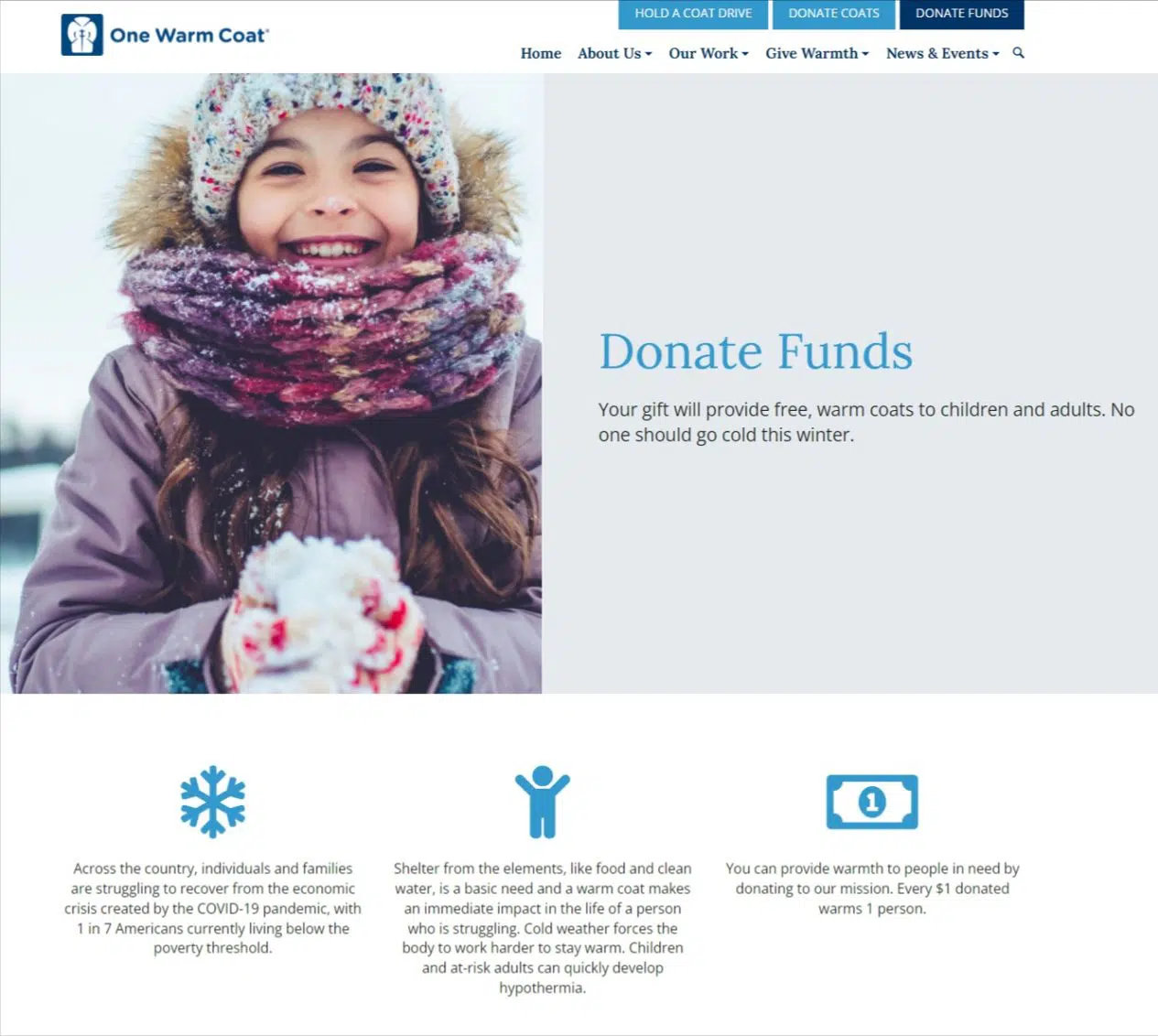Are you seeing website traffic but not a ton of meaningful activity? Making a strong case for people to get involved is more than just offering a donate button. Your nonprofit value proposition helps define why it’s worthwhile to support your mission. Without a good value proposition, visitors to your website will leave without taking action.
Picture this: Someone visits your website, reads through the story of each person you’ve helped, then heads to your donation page. They read the page title and the sentence at the top of the page, and they scroll up and down to see your entire donation form. Then, even though they’ve spent forty minutes on your site, they’re gone with one mouse click. No donation, no contact information, no beginning to a long-lasting relationship.
This scenario is called “abandonment” — a nonprofit marketer’s worst nightmare. We want to do everything we can to minimize the number of people that abandon nonprofit websites before taking action. And a clear value proposition can work to both minimize abandonment and increase website conversions (the number of people that complete an action on your website).
What is a Nonprofit Value Proposition?
Your nonprofit value proposition refers to the benefits a visitor receives for taking action on your website. It answers the question “what’s in it for me?” for each of your visitors.
For example, someone selling running shoes might write on their website, “Run 5,000 miles with no pain.” That’s a clear benefit to buying those shoes.
When discussing nonprofit value propositions, we usually mean the benefits to a visitor when they do things like sign up for a newsletter, make a donation or register for an event. It clarifies the part that the visitor is playing in working toward your organization’s overall mission and their internal reasons for taking action on your site.
Creating Strong Nonprofit Value Propositions
So what makes a good nonprofit value proposition for each action on your website?
- It’s clear and easy to understand with no industry jargon or convoluted phrasing.
- It’s concrete and describes clear benefits to taking action.
- It helps to calm fears and minimize risks (e.g. mentioning that all donations are processed securely).
- It demonstrates why taking this action with your organization is better than taking it with a different nonprofit.
- It’s short — a headline, a couple of sentences and bullet points if possible.
A note on length
These tips will vary depending on the action you want someone to take. For example, if you’re trying to write text for an email signup form in your sidebar, a couple of sentences is going to be too much. Think contextually about the cost for the visitor to take action (both in time and money) and adjust the length of your value proposition to match what they have to give up.
Nonprofit Examples
The value propositions on your nonprofit’s website can have a huge impact on whether visitors take action. Often what I’ve found is that because nonprofits aren’t selling goods like running shoes, they either don’t spend much time developing value propositions for their conversions or choose to leave them out entirely.
Let’s take a look at a few examples in more depth.
The email newsletter signup form
Almost every nonprofit that sends email newsletters has a form on their website to sign up for their list. Often, the form looks something like this:

The text “Sign Up For Our Newsletter” doesn’t provide an effective value proposition. Instead, all I know is that I’m giving up my email address in exchange for a “Newsletter.” I don’t know what content they’ll send me or how often they’ll send it.
The newsletter may contain lots of valuable content, but this sign-up form is asking me to take a leap of faith to discover what that content may be. And with the amount of email most of us receive these days, many are less willing to take that leap without knowing what they’ll receive in return.
Instead, what if the text read: “Sign up for monthly news, volunteer opportunities and stories from our community.”

True, it’s a little longer, but the value is clear. If I’m interested in organizational news, volunteer opportunities or stories of the people the organization has helped, I’m much more likely to sign up. Plus, I also know that emails will only be sent once a month, so I’m not concerned about an influx of daily emails hitting my inbox.
If you want to offer very targeted value for your newsletter, allow visitors to sign up for a specific segment, such as your “volunteer opportunities” segment. That way they’re only getting the information that provides them the most value.
The donation form
The donation form also presents an opportunity to offer value. It might not be valued in the form of goods, but emotional value is a powerful currency. Let’s take a look at the top of a donation form I saw recently:

The value proposition is totally absent on this Donate page. Other than contributing to a general Giving Tuesday campaign, I have no idea how my donation is going to be used in practice. Will it be used for a specific program? Will it go to helping mow the lawn outside the office? I have no way to know. More than anything, I don’t get immediate emotional value from my contribution.
Now take a look at this Donate Funds page from One Warm Coat:

The page begins with a strong value proposition:
Your gift will provide free, warm coats to children and adults. No one should go cold this winter.
They follow up with three columns of text to drive home the number of people without the means to purchase basic needs like coats, the immediate impact a warm coat can have on a person’s life, and the cost to provide a coat to one person.
I’m convinced of the direct benefit to a person in need and can then choose the amount I’d like to give based on the information they’ve shared.
The programs page
The “Our Programs” or “What We Do” pages are a unique opportunity to talk about the services your organization offers combined with a call to action to get involved in that work in a specific way, like donating, volunteering or applying for a program.
But you’ll need to do more than add a “Donate Now” button at the bottom of the page. It’s essential to demonstrate the value to the visitor through a targeted call to action. For example, on its Senior Programs page, the Northside Youth and Senior Service Center outlines all of the program areas that it supports before calling on community members to give. The call to action is highly relevant and offers a clear-cut value proposition to potential donors.

I know that by clicking “Give Today,” I’m supporting these important programs for seniors in St. Louis and helping them to keep their independence longer.
Find more tips for upleveling your nonprofit’s calls to action around your website.
Optimize Your Website for Results
Email sign-up forms, donation pages and program content aren’t the only places that you can provide a strong value proposition on your nonprofit’s website. Think about the actions that you ask visitors to take on your website and the places where visitors actually take those actions. Each and every one of those places should have a clear and succinct value proposition showing visitors what’s in it for them to act now.
That includes calls to volunteer, to register for an upcoming event, to participate in item donation drives, to run peer-to-peer fundraising campaigns… the list goes on.
Optimize your nonprofit’s value propositions and stop waking up in the middle of the night wondering how many donations or other website conversions you’ve lost.
Have any examples of great nonprofit value propositions? Have a question about crafting a value proposition on your website? Don’t hesitate to reach out in the comments.
Originally published on 8/14/13 by Jonathan Goldford. Updated with new information, examples and images on 3/9/22.

This is the best piece I have read so far on Non-profits’ Value Proposition. You also applied your lesson to the piece- clear and concise. Thank you so much, Jonathan.
Of course Edith. Thanks for taking the time to write such a nice comment. I’m glad you enjoyed the post.